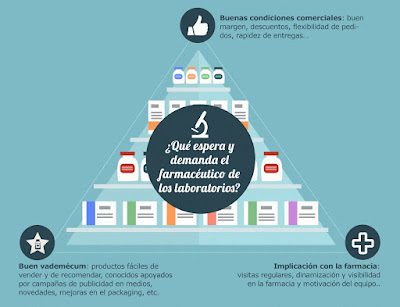Consumer Healthcare (CH) has experienced notable growth in recent decades and, as has been noted for years, the pharmacist has acquired an important role in the purchasing decision process for CH categories. Below are some interesting keys regarding the pharmacist and the pharmacy office.
Of the different business sources of the CH categories, the pharmacy is the most powerful
According to internal HAMILTON data, The pharmacy channel is the one that generates the most trust in consumers of the main CH categories, especially among parents with children and middle-aged and older people.
Consumers who go to the pharmacy trust the recommendations of the pharmacist who knows all the products well and knows which one best fits their needs. It should also be noted that the consumer of CH categories is increasingly demanding and is better informed so he sees the pharmacist as a source of expert advice.
Instead, it emerges as a weakness association that the consumer makes of the pharmacy with the medicinal world and symbolically his “illusion” of consuming products as naturally as possible is reflected.
It should be noted that there is an incipient habit of purchase in the online channel mainly based on the price variable as a purchase driver; Although the insecurity in the purchase of certain products (food supplements, nutritional supplements, etc.) remains above any other driver and offline purchasing at the pharmacy emerges as a much safer alternative.
In some CH categories, the pharmacist has the same weight in the final purchase as the prescribing doctor.
According to studies carried out by HAMILTON in CH product categories sold in pharmacies (does not apply to medications), approximately 1 in 3 consumers arrives at the pharmacy with the decision to buy a certain brand based on the doctor's recommendation (dermatologist, pediatrician, dietician, nutritionist...), another third of consumers decide the brand for themselves (influenced by advertising on television, radio, press, internet... or influenced by family and friends), and the pharmacist is responsible for choosing the brand of 30% remaining.
To all this we have to add that only between 30 and 40% of consumers claim to be loyal to their brand. Of the rest of the consumers who change brands, they declare that in 30% of the occasions when they changed brands it was on the recommendation of the pharmacist.
Of among the factors that influence the recommendation that the pharmacist gives mainly highlights the knowledge they have of the products. According to studies carried out by Hamilton, the main recommendation drivers of the pharmacist are:
What do pharmacists expect and demand from laboratories?
The pharmacist represents a clear opportunity for laboratories that know how to listen to their demands.
From HAMILTON's internal data we see that pharmacists' demands focus on:
Given this, the figure of the delegate acquires special importance since it constitutes the most differentiating element between some laboratories and others. The relationship you have with the delegate is the relationship you project with the laboratory and its brand.
Idoya Sanchez
Jennifer Varon



